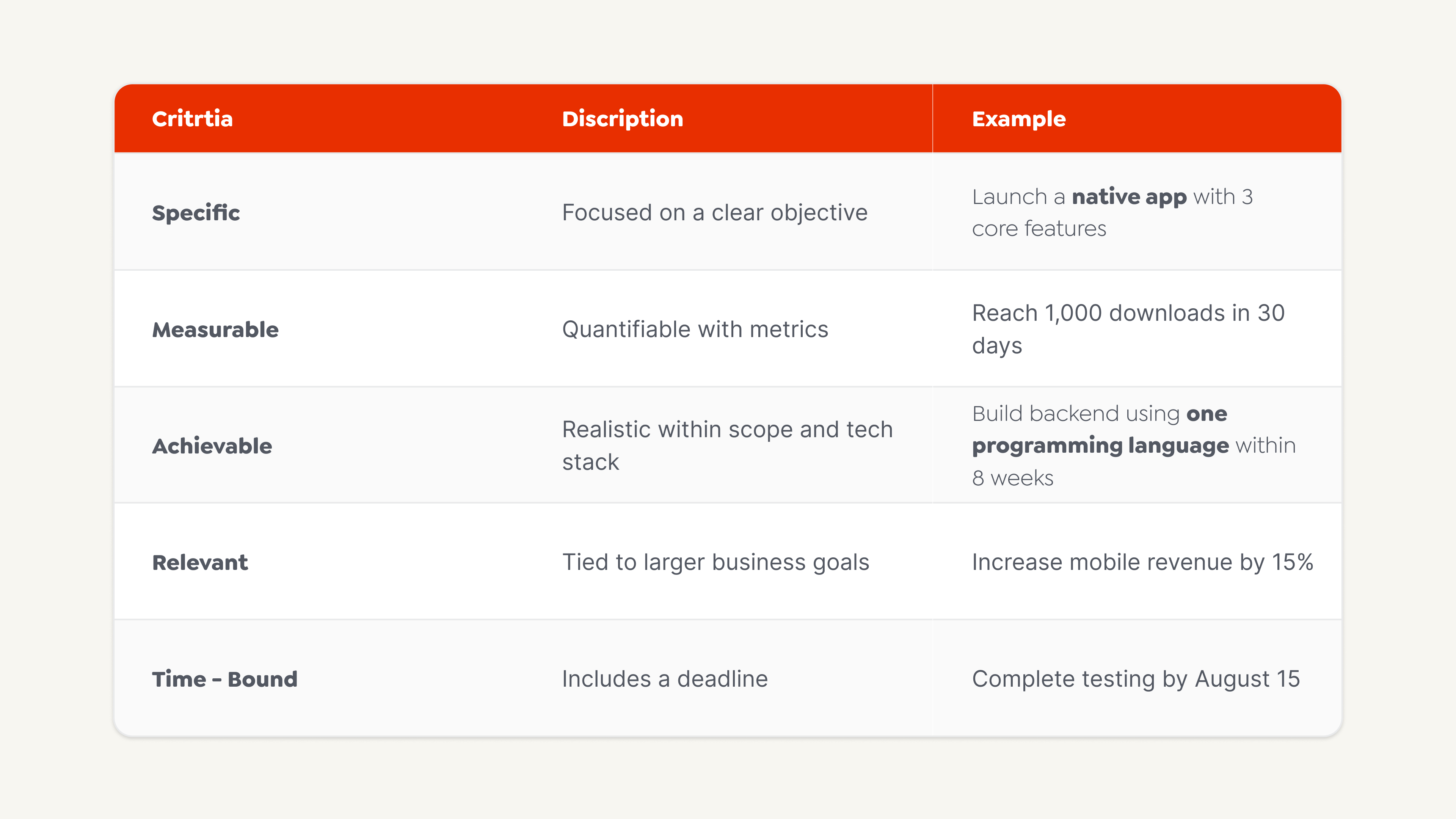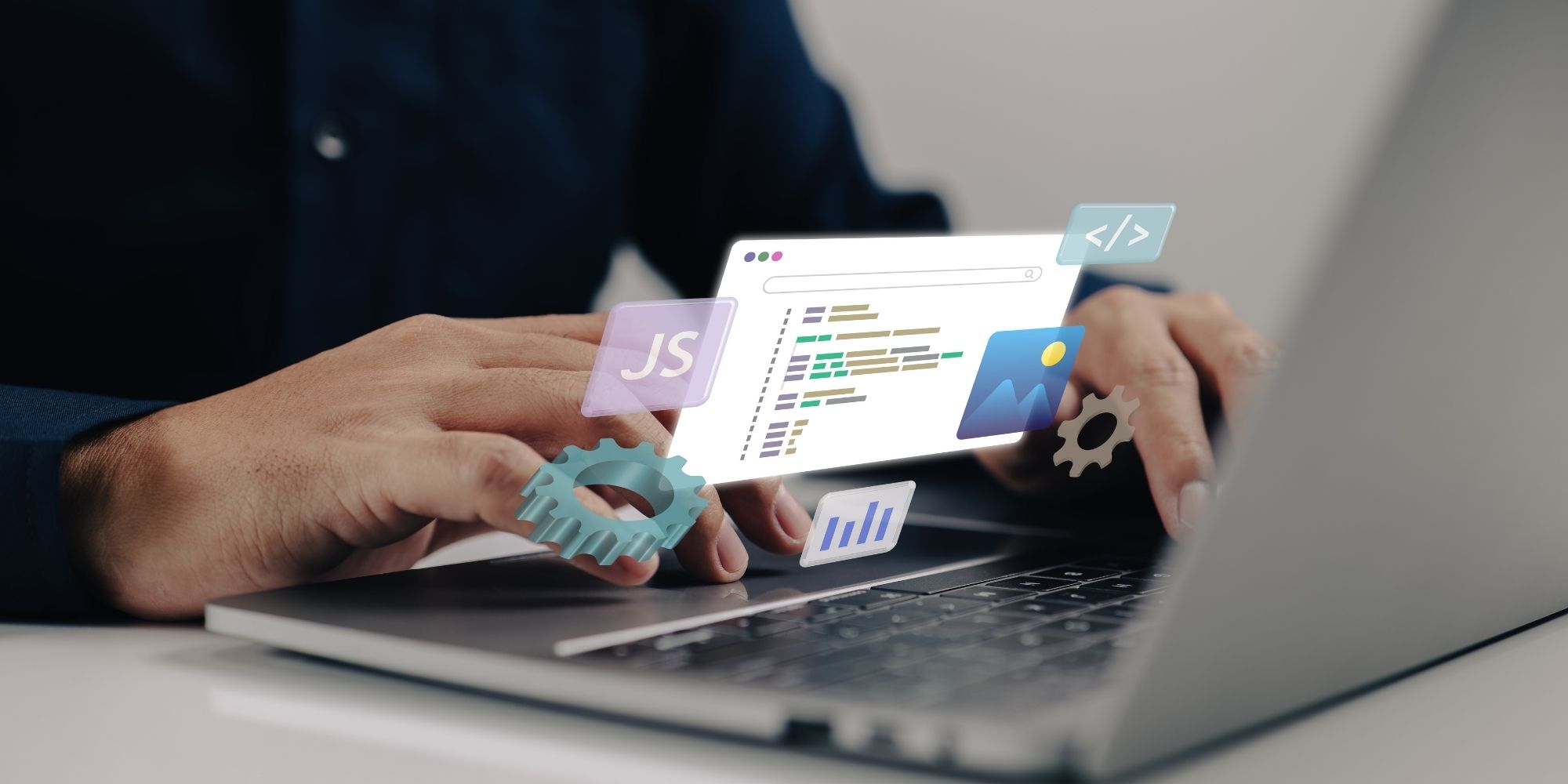In today’s competitive world of mobile app development, having clear and actionable goals is essential. Whether you’re developing for iOS, Android, or both, your mobile application must align with your business objectives. It should also target a specific group of users on different mobile devices.
Apps that succeed—be it for social networking, e-commerce, or productivity—start with a purpose. Setting goals for mobile app development gives your team clear direction. It keeps development focused. This also ensures you improve your product based on real results.
Without goal clarity, you risk:
- Developing features that don’t serve your real user needs
- Exceeding your budget
- Launching an app that performs poorly across operating systems
What Do Good Goals Look Like?
 This clarity is critical when targeting multiple mobile devices and managing cross-functional teams.
Aligning Goals With Each Phase of Development
This clarity is critical when targeting multiple mobile devices and managing cross-functional teams.
Aligning Goals With Each Phase of Development
Different phases of the mobile app lifecycle call for different types of goals. Here’s how to align them:
1. Discovery & Planning
- Identify your target audience and platforms
- Define problems your app solves in real time
- Choose the right programming language and architecture
2. Design & MVP
- Build prototypes for usability testing
- Design efficient user flows that enhance customer experience
- Prioritize features that provide a wide range of value
3. Development
- Implement cross platform apps if needed for broader reach
- Optimize code for both native app and hybrid environments
- Ensure a consistent experience across operating systems
4. Launch & Growth
- Achieve KPIs like 500 organic installs or 80% crash-free sessions
- Introduce app purchases for monetization
- Start gathering data for understanding user behaviors
Each goal contributes to a larger vision of mobile app success.
Examples of Realistic Mobile App Development Goals by Industry
Setting industry-specific goals ensures your app delivers value aligned with what your users expect. Below are examples tailored to different sectors, each focusing on performance, user experience, and engagement.
E-commerce Apps
E-commerce apps prioritize seamless shopping experiences and user retention. Here are sample SMART goals:
- Increase product views per session by 25% within 3 months of launch
- Reduce cart abandonment rate by 10% by optimizing checkout user flows
- Implement in-app purchases and exclusive offers by the second version release
- Integrate real-time inventory updates across all mobile devices
Health & Fitness Apps
These apps thrive on engagement, habit formation, and real-time feedback.
- Launch daily activity or workout challenges to increase engagement
- Enable real-time syncing with wearable devices like Fitbit or Apple Watch
- Maintain a 95% crash-free session rate across Android and iOS platforms
- Reach a daily active user (DAU) rate of 5,000 within 60 days
SaaS and Utility Apps
Apps in this space must balance robust functionality with a smooth experience.
- Achieve 5,000 monthly active users within 90 days post-launch
- Release dark mode and calendar sync based on feature usage and user behaviour insights
- Ensure 70% of users complete onboarding within the first 5 minutes
- Launch cross platform apps for both desktop and mobile environments for broader reach
Tailoring goals by industry helps you serve a wide range of users more effectively.
Tools to Define and Track Mobile App Development Goals
Planning & Strategy
- Trello, Notion, or Jira for roadmaps and sprint planning
- Define goals at each stage based on business goals and timelines
- Use Firebase or other tools to monitor real user behavior
- Analyze drop-offs in user flows and segment your user base
- Figma and Maze for rapid UX validation
- A/B test features to enhance the customer experience
Revisiting Goals Post-Launch
Monitor:
- How users engage across different operating systems
- Which features are most used in real time
- How different segments of your user base behave
- If onboarding is weak, simplify your user flows
- If retention drops, incentivize return visits with new content or perks
- If purchases are low, re-evaluate your app purchases UX
Conclusion
It should also meet the needs of your target audience.
Choosing the right programming language and improving the customer experience on mobile devices are important goals. These goals guide you in building smarter products and launching better ones.
Continue Reading: Mobile App Development Best Practices: Build Smarter, Launch Better




